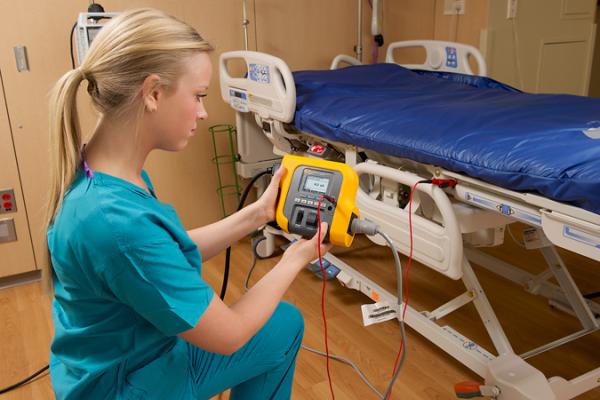Electrical safety is a critical aspect of healthcare that directly impacts patient outcomes. From the advanced medical equipment used for diagnosis and treatment to the basic infrastructure that powers a healthcare facility, ensuring electrical safety is paramount. Inadequate electrical safety measures can lead to equipment malfunction, posing significant risks to patient health and safety. Furthermore, electrical hazards can cause fires and other emergencies, disrupting essential medical services and compromising patient care.
In this blog post, we will examine the correlation between electrical safety and patient outcomes. We will explore how robust electrical safety protocols contribute to a safer healthcare environment and highlight the role of a medical grade isolation transformer in reducing the risk of electrical-related incidents. By understanding these elements, healthcare providers can better appreciate the importance of maintaining high standards of electrical safety.
The Correlation Between Electrical Safety and Patient Outcomes
Electrical safety in healthcare facilities is not just a regulatory requirement; it is a fundamental component of patient safety. Poor electrical safety practices can lead to various issues, including electric shocks, equipment failures, and fires, all of which can have dire consequences for patients. For instance, an electric shock to a patient connected to medical equipment can cause immediate harm or even death. Additionally, equipment failures due to electrical issues can lead to incorrect diagnoses, delayed treatments, or the inability to provide necessary care.
Healthcare facilities are filled with various electrical devices, from life-support machines to diagnostic tools. Ensuring these devices operate safely and reliably is crucial for patient care. Regular maintenance and inspection of electrical systems, along with adherence to safety standards, help prevent electrical failures and enhance the overall safety of the healthcare environment. This proactive approach to electrical safety directly correlates with better patient outcomes by minimizing the risk of incidents that could compromise care.
Enhancing Safety with Medical-Grade Isolation Transformers
One of the key tools in enhancing electrical safety in healthcare environments is the use of medical-grade isolation transformers. These devices are specifically designed to prevent electrical shocks and reduce the risk of electrical fires. Isolation transformers work by separating the electrical supply from the equipment, ensuring that any fault in the equipment does not lead to a dangerous situation.
A medical grade isolation transformer is particularly important in critical care areas such as operating rooms, intensive care units, and emergency departments. In these settings, the continuous and safe operation of medical equipment is vital. Isolation transformers provide an additional layer of protection by ensuring that even in the event of an electrical fault, the equipment remains safe to use. This reduces the risk of electrical-related incidents, thereby protecting both patients and healthcare staff.
The Role of Regular Maintenance and Inspections
Regular maintenance and inspections of electrical systems in healthcare facilities are essential for preventing electrical hazards. These activities ensure that all electrical components are functioning correctly and safely. Maintenance protocols typically include checking for worn-out wires, ensuring proper grounding, testing emergency power systems, and verifying the performance of isolation transformers.
By conducting regular inspections, healthcare facilities can identify potential electrical issues before they become serious problems. This proactive approach not only prevents electrical failures but also ensures that medical equipment is always ready for use. For patients, this translates to receiving timely and accurate care, as there are fewer disruptions caused by electrical problems. Additionally, regular maintenance helps extend the lifespan of medical equipment, providing long-term cost savings for healthcare facilities.
Implementing Comprehensive Electrical Safety Training
Ensuring electrical safety in healthcare settings also involves comprehensive training for staff. Healthcare providers, including doctors, nurses, and technical staff, need to be aware of the potential electrical hazards and how to respond to them. Training programs should cover topics such as the safe operation of electrical equipment, emergency procedures in case of electrical incidents, and the importance of regular maintenance.
Educated and well-trained staff can quickly identify and respond to electrical hazards, minimizing the risk to patients. For example, in the event of an equipment failure or electric shock, trained personnel can take immediate action to ensure patient safety and restore normal operations. This level of preparedness significantly enhances patient outcomes by ensuring a rapid and effective response to any electrical safety issues.
Electrical safety is a crucial aspect of healthcare that significantly impacts patient outcomes. By ensuring robust electrical safety measures, healthcare facilities can prevent incidents that could compromise patient care. Medical-grade isolation transformers play a vital role in reducing the risk of electrical-related incidents, particularly in critical care areas. Regular maintenance, inspections, and comprehensive staff training further enhance electrical safety, ensuring a safer environment for patients and healthcare providers alike. By prioritizing electrical safety, healthcare facilities can improve patient outcomes and provide high-quality care consistently.








